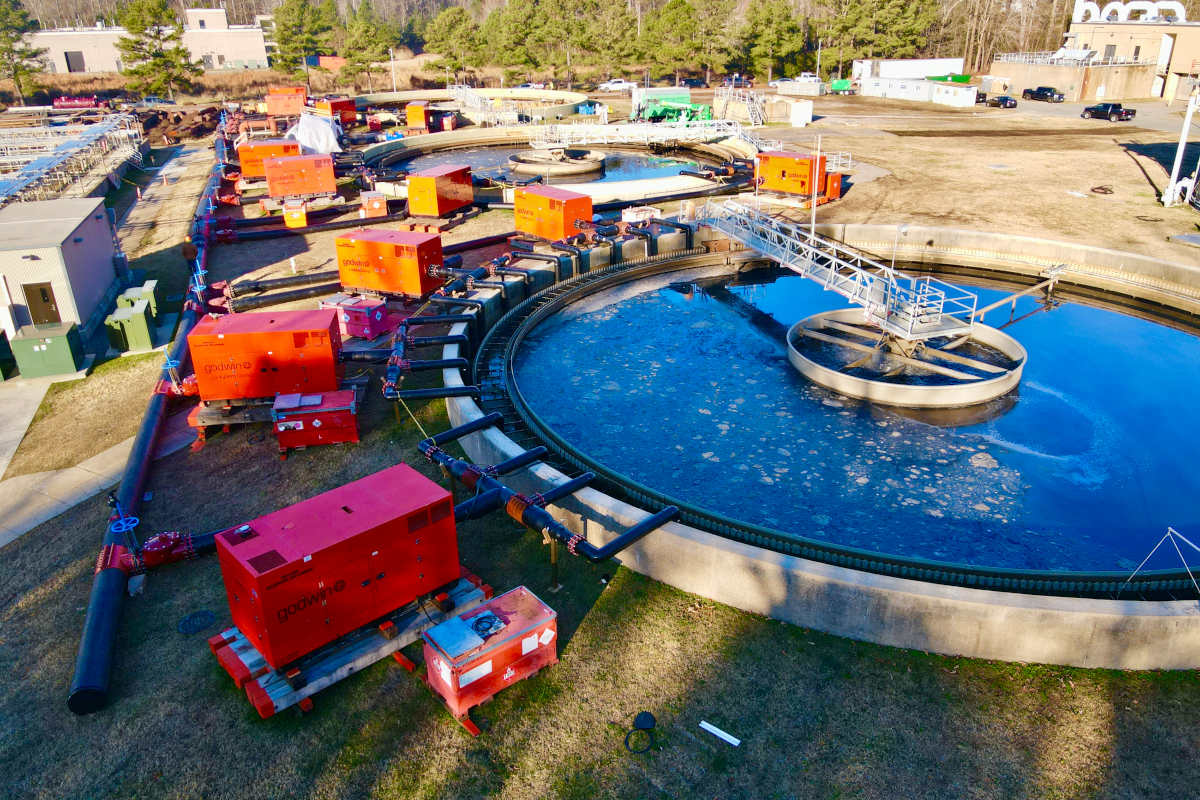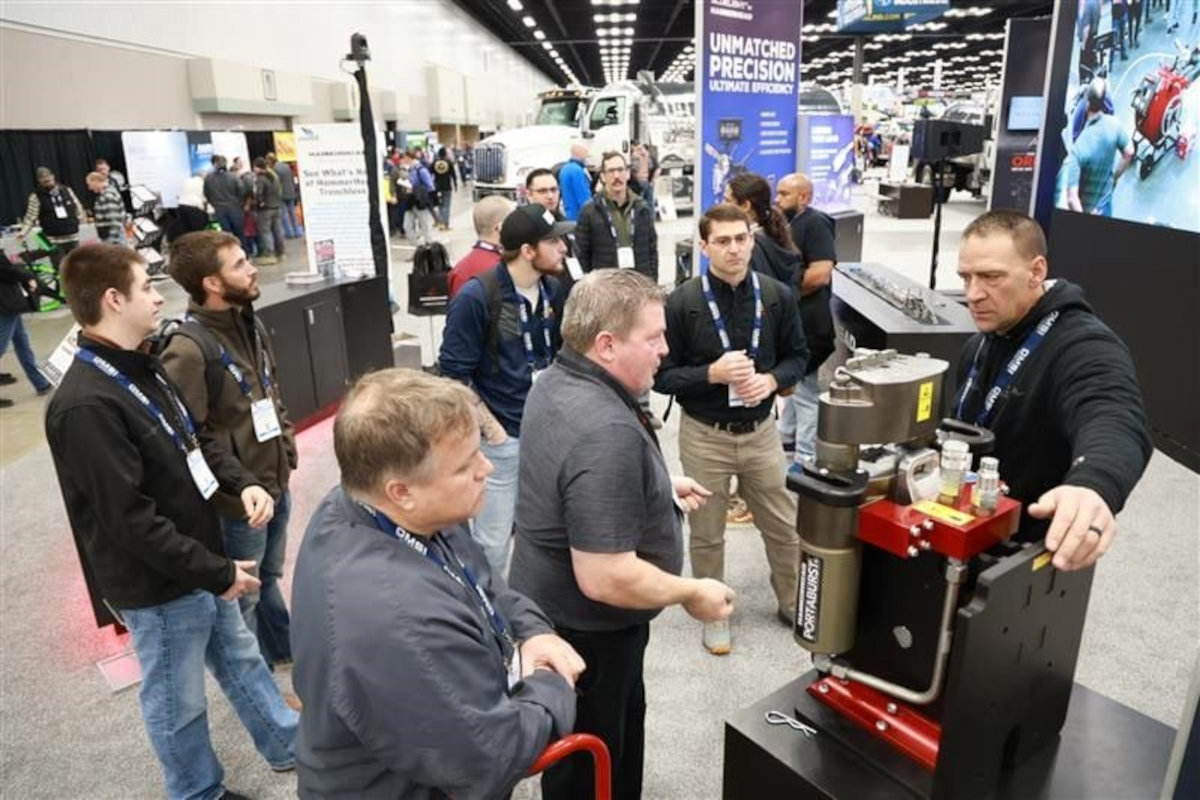
No Bogies Here: Pipe Cleaning Project Takes Crew Across Texas Golf Course
During the summer of 2015, Tony Almeda with the engineering firm Halff Associates contacted Rusty Nezat of Nezat Training and Consulting Inc. regarding a sanitary sewer rehab project in the Dallas area. Almeda was interested in the capabilities of the Jigawon sewer cleaning process, which is a unique method of cleaning sewer lines using the existing flow.
Rusty Nezat, of Rusty Nezat Training and Consulting, arranged a meeting to discuss his project and the possible use of its Jigawon process. The scope of the project was to clean, televise, bypass pump and rehabilitate approximately 16,000 lf of 24-in. through 36-in. sanitary sewer located through the Gleneagles Country Club golf course in Plano, Texas.
As the discussion continued, Halff Associates explained the many challenges it was facing. The biggest challenge they perceived was the given time constraints in an area that would not be conducive to receiving large sewer cleaning and rehabilitation equipment footprints in the grass. The firm was only given a three-month window during which the work could be accomplished on the golf course — this is when the grass would be in hibernation during the winter months in Texas (December through February). Due to the limited timeframe, it was important that the lines were cleaned prior to the installation of roadways and the accompanying installation of lining.
RELATED: Issues that Affect the Cost of Sewer Maintenance and the Quality of Sewer Cleaning
Once hired, Rusty Nezat Training and Consulting and Jigawon Inc. would be required to complete the cleaning and inspection of the sewer lines prior to access roads being installed for the cured-in-place pipe (CIPP) installation. In order to comply with these needs, Jigawon was required to make three setups on the golf course where access to manholes would be available. In doing so, this would require that the team clean more than 5,000 ft between accessible manholes, as well as remove debris. While Halff Associates was unsure of the feasibility of such cleaning, the Nezat team was confident that it could be done to Halff Associates’ satisfaction for the rehabilitation of the pipe immediately afterward.
By design, the patented Jigawon process has the ability to clean very long runs of more than 5,000 lf with limited access to the middle manholes. Using the existing sewer flow, the cleaning tool is propelled through the sewer line where turbulence is created causing the debris in the pipe to become suspended in the flow. Thus, begins the slow migration of the suspended material downstream to the pre-determined extraction point.
During a mandatory project walk-through, the Nezat team listened to the lining contractors discuss in great detail the difficulty of the project. Interestingly, on the day that the job bids were to be opened, there were no bidders for the project. Over a year later, after the City of Plano and Halff Associates made modifications to the specifications, the job was rebid and Insituform Technologies LLC was the successful bidder. Rusty Nezat Training and Consulting provided its job plan and cost for the cleaning and televising of the project to all parties who were interested in bidding the project. Jigawon, Inc. was the only contractor that provided cost numbers for the cleaning and televising of the project.

By design, the patented Jigawon process has the ability to clean very long runs of more than 5,000 lf with limited access to the middle manholes.
In fall 2016, Jigawon Inc. became an official subcontractor to the Insituform Technologies group for this project. The sewer cleaning and inspection plan was submitted and accepted, and we were now ready to “beat the clock” on this project.
The project late in fall 2016. Almost immediately the Jigawon crew encountered extremely low flows in the sewer line. Due to the need of more flow for the cleaning process, additional flow was induced using fire hydrants located throughout the neighborhood. Manhole covers with 90 degree bends built into them were designed to accommodate a fire hose coming from the hydrant. This process actually worked quite well. The water for the cleaning was provided free of charge by the city, but the water usage must have been quite a shock to someone. As we began cleaning the second of our three segments, the flow picked up considerably and the hydrants were not required for flow any longer.
Due to the deadline, the Jigawon crew typically worked 14- to 16-hour days. As we worked into December, the weather took a turn for the worse with temperatures that hovered in the teens. Once again, the crew did not shut down due to the looming deadline, so it had to improvise, adapt and overcome despite the inclement weather.
One creative solution was to turn the winch machine into a toasty little cabin. With the use of some temporary fencing, some tarps and a couple of propane heaters, the crew was able to bear the cold and continue cleaning. There were a few instances where the guys drove their John Deere gators from one manhole to the next to check the progress of the cleaning tool when unbeknownst to them the cart path had iced over. This sent them into a slide that almost landed them in the pond. One morning around 2:00 a.m., the crew was extracting debris material and I was required to do a manhole entry. I asked my topside guide, please hand me the metal pole and as I reached to take it from him he would not let go of it. While I said, “Let go, let go! ”, he said, “I can’t, I can’t! The pole is frozen to my hands!” He had grabbed the pole in 10 F weather with no gloves on, which of course was a bad move. These are some examples of the difficult circumstances we encountered during this project.

Due to the limited timeframe, it was important that the lines were cleaned prior to the installation of roadways and the accompanying installation of lining.
As the crew entered into the last segment of the project, the lines became extremely deep. At depths exceeding 35 ft, two flashlights were needed to see the bottom of the manhole. The last piece of televising was complete at 2:30 pm on the final day and the pumps came on at 3 p.m. We have never been under such time constraints while performing a sewer cleaning/inspection project. It was very satisfying to have successfully completed the project on time and not hold up our prime contractor from proceeding with the project.
In conclusion, this project taught us to never give up. We’re pleased that the success of the Jigawon process continues to be verified in the worst of situations.
Rusty Nezat is director of Nezat Training and Consulting and operations manager for Jigawon Inc.




